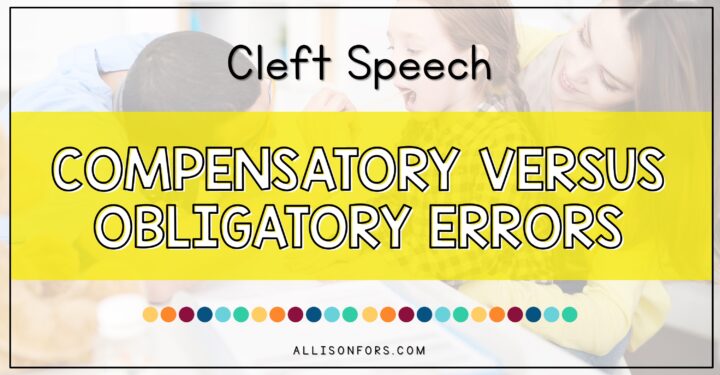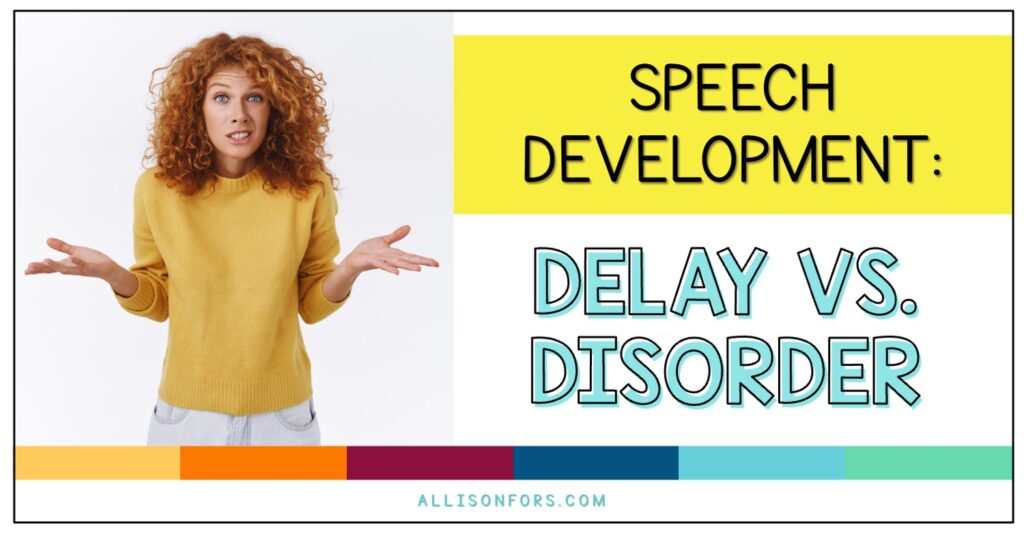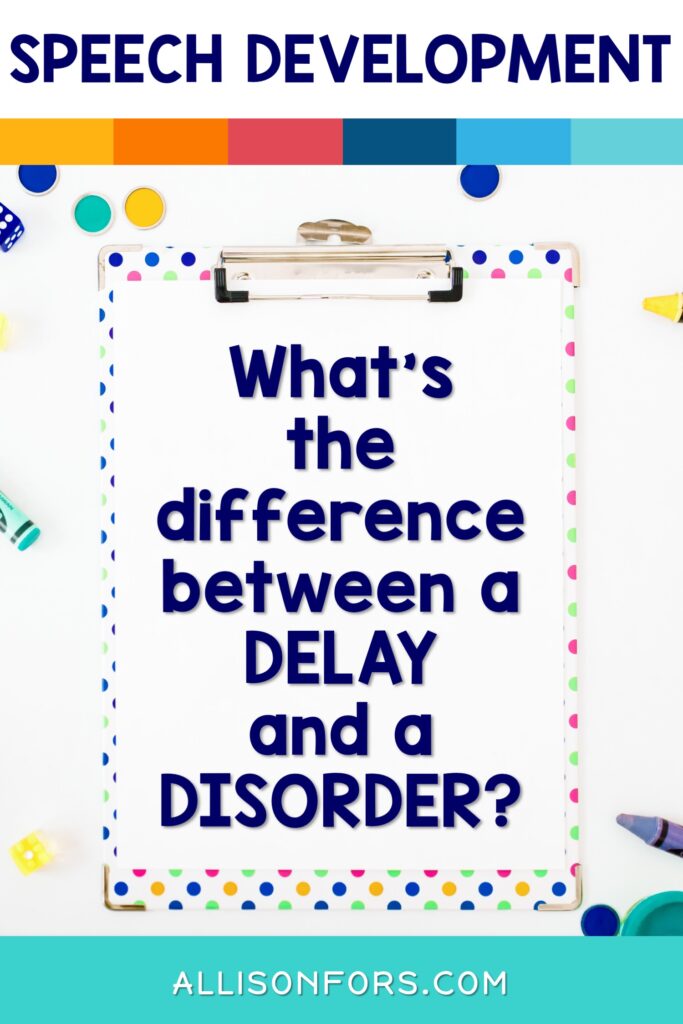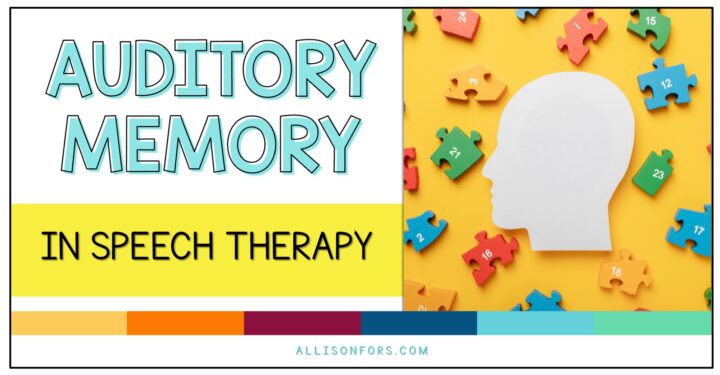
The Difference Between a Delay and a Disorder

Ever wonder the difference between a delay and a disorder? Or have a parent ask you?
What is a speech delay versus a disorder?
A speech or language delay is when a child’s skills develop in the pattern we expect, but not at the same rate as their peers. They may have a slower onset of skills and/or slower sequence in which the skills are learned.
A speech or language disorder is when a child does not follow the typical pattern and sequence of development. For example they may skip certain steps in the typical order of acquisition.
A delay may be a child with fewer words than we expect for their age. We typically expect these children to catch up to their peers. A disorder may be a child who may have great expressive language (vocabulary) but have difficulty with receptive language (following directions, etc.) These children may have persistent difficulties and may have future issues with reading, writing, and communication.

Download this graphic for free.
All children go through similar stages as their speech and language develops. However, the range of what is typical can vary quite a bit.
Speech delays can be caused by various factors, such as environmental factors, limited exposure to language, hearing impairment, or simply a natural variation in individual development. Speech disorders can have multiple causes, including neurological conditions, oral-motor issues, hearing loss, or developmental disorders.
Delay versus Disorder Examples:
Speech Delay: Sarah, a 2-year-old, is not yet using as many words as her peers. While most children her age may have a vocabulary of 50 words, Sarah only uses about 20 words. Her parents notice that she understands instructions and communicates non-verbally, but is slower in developing expressive language. This could be a speech delay, as Sarah might catch up to her peers with intervention, time, and exposure to language.
Speech Disorder: John, a 4-year-old, consistently struggles with pronouncing certain sounds and is difficult to understand. His speech is not improving over time, and he has persistent difficulty producing certain speech sounds despite efforts and exposure to language. This could indicate a speech disorder, where there’s a more significant and ongoing challenge with the physical production of speech sounds.
Keep in mind that all children develop speech and language skills at different rates, but there is a developmental progression to speech development. For example, a sound substitution at 2 years old may be developmentally appropriate, but the same error at 4-5 years old would need remediation.
Read more about milestones: Speech and Language Norms
An Important Note: Language Difference
A language difference is when a child’s communication meets the norms of the primary speech community but does not meet the norms of Standard English. This difference can occur when the child’s primary language isn’t English or even within different dialects of the English language.
You may be interested in:
ASHA Late Langauge Emergence Clinical Topic Page
The 5 Components of Language

If you enjoyed this post, please share it!






